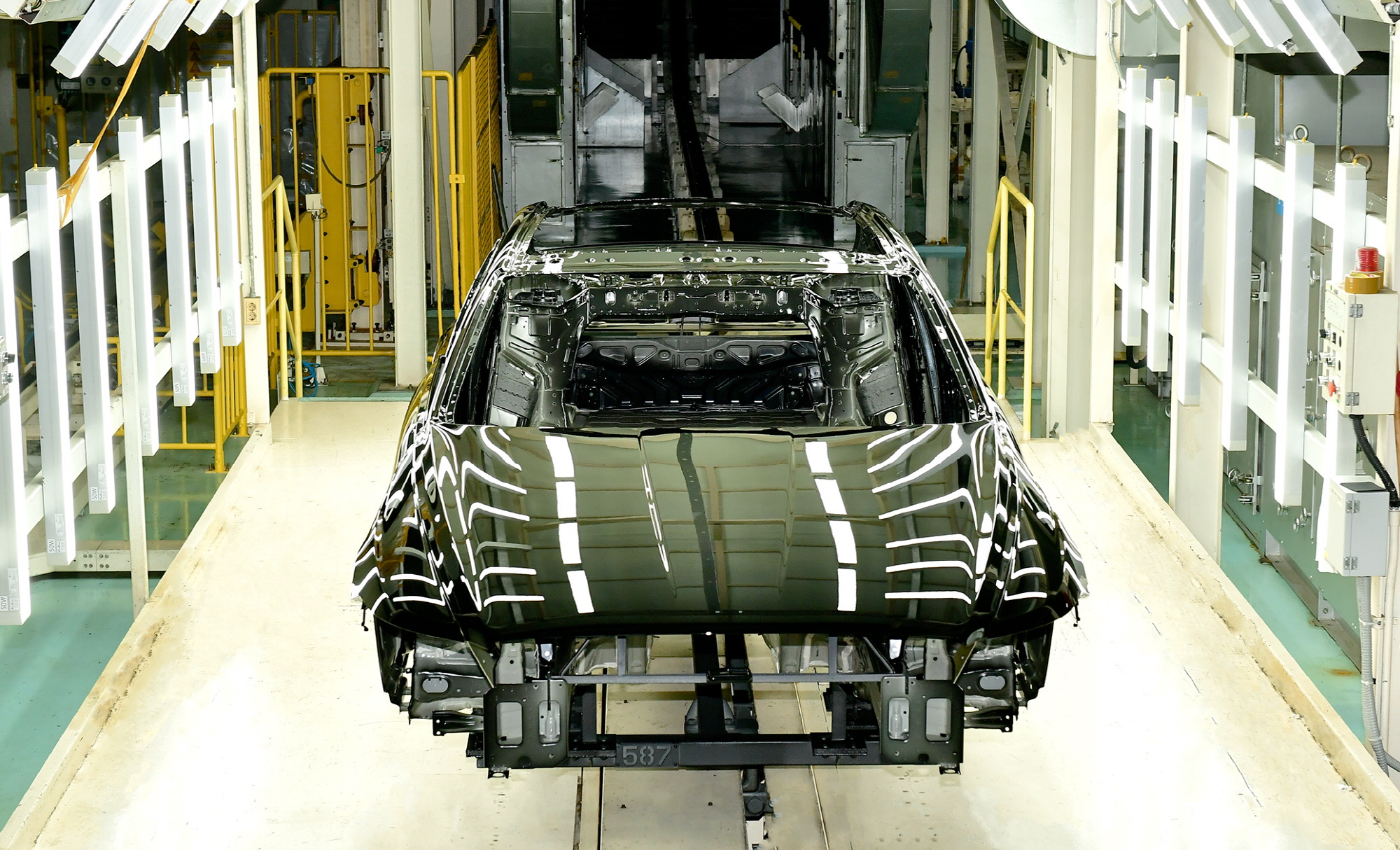
Hyundai Motor Company has unveiled a new painting technology that dramatically reduces energy consumption in automotive painting processes, maximizing carbon emission reduction effects.
The automotive painting process consists of four main stages: pre-treatment, base coat, intermediate coat, and top coat. Among these stages, the process of solidifying the paint applied through high-temperature treatment is referred to as the ‘curing process.’
Hyundai developed a paint technology that maintains the same coating quality while performing the top coat curing process at 90℃ for 20 minutes, instead of the previous method which required 140℃ for 20 minutes.
While the previous paints contained melamine that cured only above 140℃, Hyundai’s newly developed paint utilizes isocyanate components that cure at temperatures over 90℃ instead of melamine.
The use of this new paint, which cures at 50℃ or lower, eliminates the need to excessively increase temperatures, leading to significant reductions in energy consumption during the production process.
In fact, the painting process is identified as the automotive manufacturing process that consumes the most energy (about 43%) and is also one of the highest sources of carbon emissions. If this paint technology is commercialized, the company estimates that carbon emissions and gas consumption in this area could be reduced by approximately 40%.
Implementing this technology across all Hyundai factories worldwide could reduce CO2 emissions from automotive manufacturing processes by over 16,000 tons annually. This amount equates to the carbon absorbed by 2 million pine trees, covering an area of 16 million square meters of forest, and Hyundai expects to contribute to environmental improvement through this effort.
The low-temperature curing technology is expected to significantly enhance paint quality in addition to reducing carbon emissions.
Previously, the high-temperature curing process made it difficult to apply to plastic bumpers and fenders, which have different materials from the body. However, with the low-temperature curing process, composite components can be painted and cured simultaneously.
This is likely to minimize issues related to color discrepancies between the body, bumper, and fender. The technology is also expected to be widely used in painting future mobility options such as PBVs and UAMs, which will involve various materials.
Hyundai has conducted a pilot application of this technology at its Ulsan Plant 5, where it produced prototype Genesis G80 vehicles and will continue to assess the technology’s practical application through ongoing operation and monitoring.
A Hyundai representative stated, “The low-temperature curing technology we revealed signifies that Hyundai is considering the value it can create from the production stage, beyond merely selling vehicles. By developing technologies that drastically reduce energy consumption in the painting process, we can take a significant step toward Hyundai’s carbon neutrality goal by 2045.”
Lee Sang-jin daedusj@autodiary.kr
